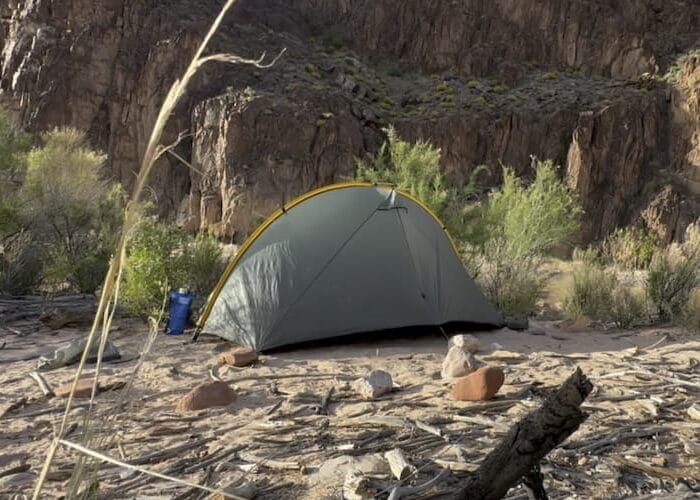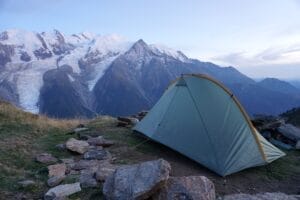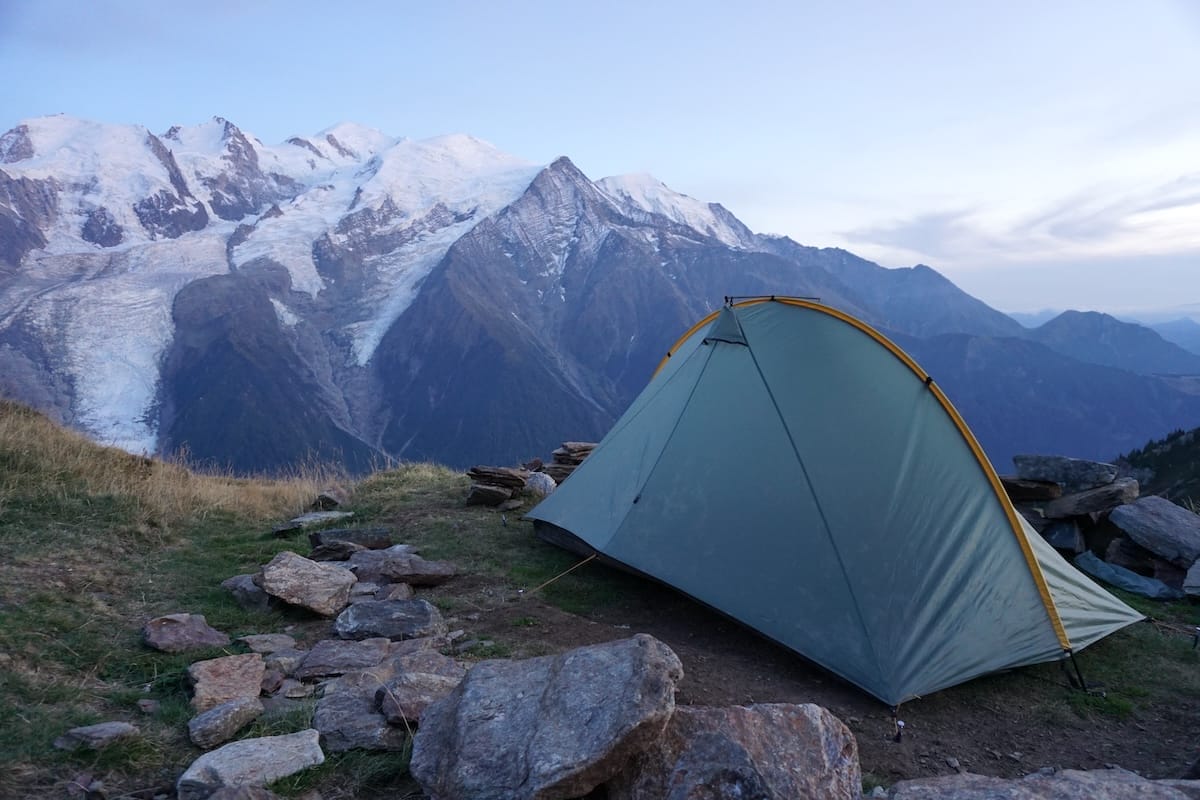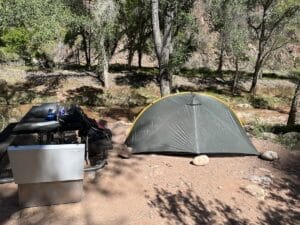The best backpacking tent for tall people?

Specs
Price: $329.00
Interior Height: 42 in / 107 cm
Floor Width: 40 in / 102 cm
Floor Length: 88 in / 224 cm
Weight: 32 Oz / 907g

Specs
Price: $329.00
Interior Height: 42 in / 107 cm
Floor Width: 40 in / 102 cm
Floor Length: 88 in / 224 cm
Weight: 32 Oz / 907g
Just a heads-up: Some links on this site are Amazon Associate affiliate links. If you pick up gear through them, I may earn a small commission—at no extra cost to you. Your support helps support the site, and I’m truly thankful.
The Tarptent Rainbow delivers huge internal space in an ultra light single person tent
Finding a spacious and comfortable backpacking tent as a tall hiker can be a real challenge. The bathtub floor measures 7ft, 4in long by nearly 3 and a half feet wide. At 32 oz, the Tarptent Rainbow is incredibly light for a tent this spacious. Lastly, at a price point of only $329 it is an amazing deal. After hours of research, I purchased my first Rainbow 13 years ago and haven’t looked back since.
The Tarptent Rainbow is a poly sil tent with one long tent pole that creates the iconic rainbow shape. It comes with 6 stakes used to stake out the corners and 2 guy lines. The versatility and spaciousness are what I love most about this tent.


Loads of space
Firstly, the space. At 6’5” / 195 cm and 180lbs / 84 kg I fit perfectly in this tent and have room to spare. I use a Therma Rest Neo Air XL mat and have room for all of my other gear inside the tent. If I prefer to store those items outside on occasion, the vestibule easily accommodates my backpack and trail runners. I’ve always hated how with the majority of tents out there, my feet will touch one wall or my head would touch the other. That rarely happens in the Rainbow. With an interior height of 42 in / 107 cm, the Rainbow offers a truly unique ‘cabin-like’ experience. I can sit up comfortably, change clothes easily, and even cook inside during inclement weather.


Trekking Poles Required?
Many of the ultra light tents require trekking poles for setup. The Tarptent Rainbow can use trekking poles for special situations but it isn’t required. The two instances I’ve used trekking poles were for additional support in 8 inches of snow. In this case there are grommets on the apex of the arch where the trekking pole tips can be placed to add to the strength and stability of the tent for snow loads. The other instance was in the Sierra and on sleeping platforms in New Hampshire where tent stakes can be really hard to place into the ground. The trekking poles can be integrated into the tent floor basically holding out the 4 corners of the tent and making it a free standing tent. Most importantly, if you prefer to hike without trekking poles, you can still use this tent. I love that versatility.
This is another one of my gear items that goes into the “if its not broke why fix it” category. Unfortunately, after 150 nights on the Appalachian Trail and roughly 100 nights on the Pacific Crest Trail along with numerous weekend and weeklong backpacking trips, it finally failed… So, I bought another one.


My only complaint
The one downside.. as with any single-wall tent, condensation can be an issue. This is one of those things in my opinion that you learn how to deal with and manage when getting into any singled walled tent. To mitigate this issue, I roll up the doors on the vestibule all of the way and enjoy the fresh air. On nights where is this not possible due to weather, I use a lightweight bandana to wipe it down.
Is there a better option?
Tarptent does have an upgraded version the Rainbow Li which uses Dyneema fabric and carbon fiber poles to reduce weight bringing the total packed weight to 25.7oz / 729g. The price tag however does reflect this coming in at $699. Thats $370 to shave off 6 oz. If you have the money, by all means go for it but I’d first find other ways to save weight like switching to Smart Water Bottles.








